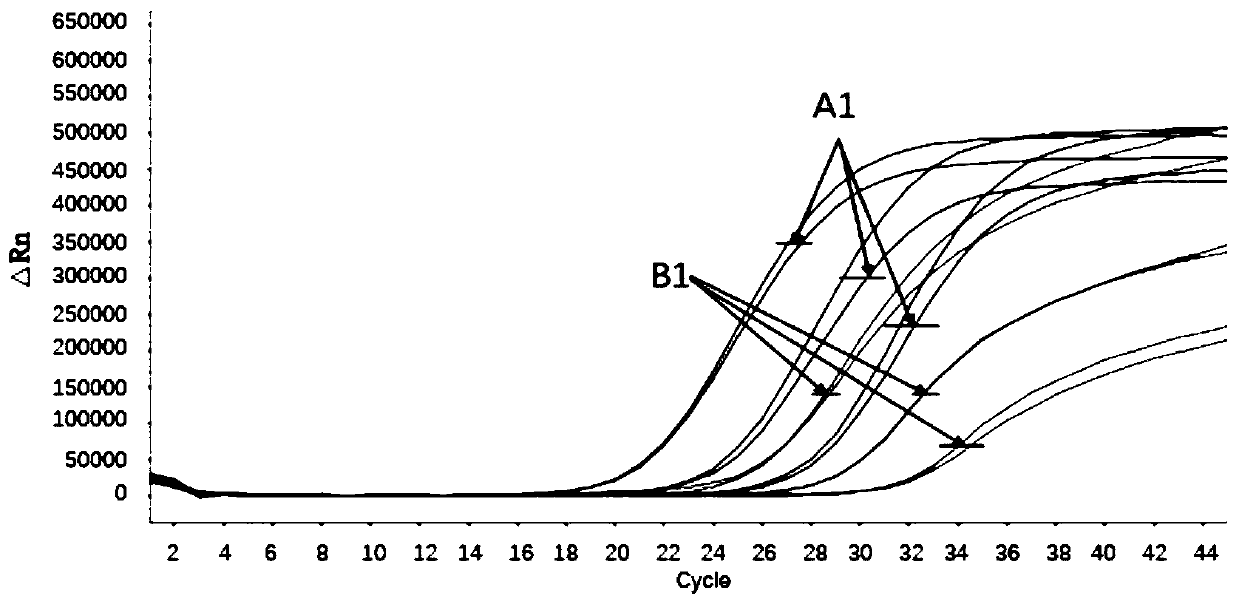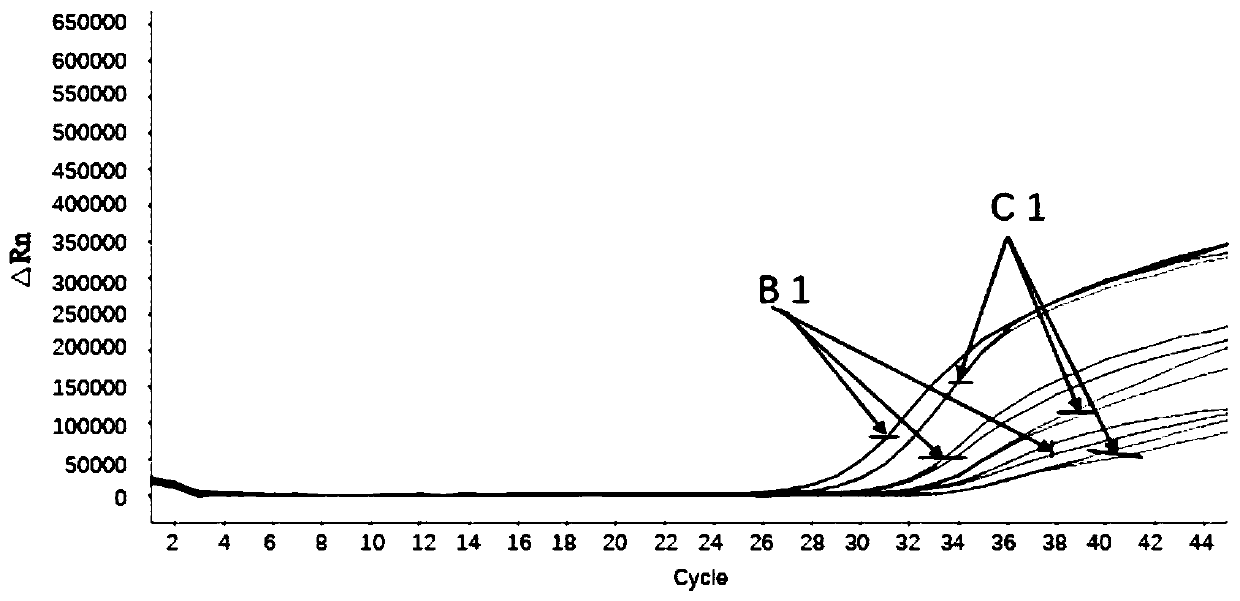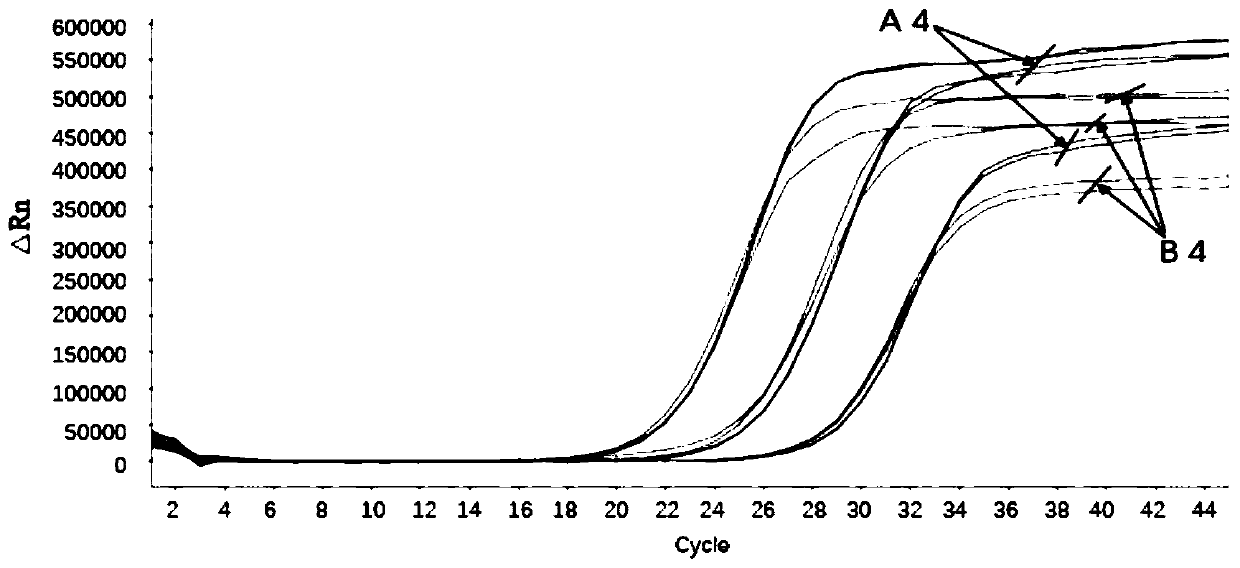Freeze-drying protective agent and freeze-drying method of RNA amplification reaction reagent
A freeze-drying protection agent and amplification reaction technology, which is applied in biochemical equipment and methods, and the determination/inspection of microorganisms, can solve the problems of poor protection effect of the freeze-drying protection agent and short storage time of the reagent, and improve the freeze-drying protection. Dry effect, high sensitivity effect
- Summary
- Abstract
- Description
- Claims
- Application Information
AI Technical Summary
Problems solved by technology
Method used
Image
Examples
Embodiment 1
[0046] Embodiment 1 A kind of preparation method of RNA amplification reaction microsphere
[0047] Reagent: (500 μL volume)
[0048]
[0049] The preparation method comprises the following steps:
[0050] (1) Preparation of lyoprotectant: take trehalose, mannitol, bovine serum albumin, surfactant, defoamer, lentinan and sucrose in a container and mix evenly;
[0051] (2) Prepare reaction reagents: place buffer, primers, probes and dNTPs in a container and mix them evenly;
[0052] (3) mix the lyoprotectant prepared in step (1) with the reaction reagent prepared in step (2) and then add the enzyme mixture to prepare a lyophilized reagent;
[0053] (4) Use a pipette gun to absorb the lyophilized reagent prepared in step (3), and then drop it drop by drop into liquid nitrogen for lyophilization to make microspheres, and transfer the lyophilized microspheres to the pre-frozen freezer Continue freeze-drying in the drier to obtain the finished product of freeze-dried microsph...
Embodiment 2
[0056] Embodiment 2 A kind of preparation method of RNA amplification reaction microsphere
[0057] Reagent: (500 μL volume)
[0058]
[0059]
[0060] The preparation method comprises the following steps:
[0061] (1) Preparation of lyoprotectant: take trehalose, mannitol, bovine serum albumin, surfactant, defoamer, lentinan and sucrose in a container and mix evenly;
[0062] (2) Prepare reverse transcription polymerase chain reaction reagents: place buffer, primers, probes and dNTPs in a container and mix evenly;
[0063] (3) mix the lyoprotectant prepared in step (1) with the reaction reagent prepared in step (2) and then add the enzyme mixture to prepare a lyophilized reagent;
[0064] (4) Use a pipette gun to absorb the lyophilized reagent prepared in step (3), and then drop it drop by drop into liquid nitrogen for lyophilization to make microspheres, and transfer the lyophilized microspheres to the pre-frozen freezer Continue freeze-drying in the drier to obtain...
Embodiment 3
[0067] Embodiment 3 A kind of preparation method of RNA amplification reaction microsphere
[0068] Reagent: (500 μL volume)
[0069]
[0070]
[0071] The preparation method comprises the following steps:
[0072] (1) Preparation of lyoprotectant: take trehalose, mannitol, bovine serum albumin, surfactant, defoamer, lentinan and sucrose in a container and mix evenly;
[0073] (2) Prepare reverse transcription polymerase chain reaction reagent: mix buffer, primer, probe, dNTPs and enzyme evenly;
[0074] (3) mix the lyoprotectant prepared in step (1) with the reaction reagent prepared in step (2) and then add the enzyme mixture to prepare a lyophilized reagent;
[0075] (4) Use a pipette gun to absorb the lyophilized reagent prepared in step (3), and then drop it drop by drop into liquid nitrogen for lyophilization to make microspheres, and transfer the lyophilized microspheres to the pre-frozen freezer Continue freeze-drying in the drier to obtain the finished produc...
PUM
 Login to View More
Login to View More Abstract
Description
Claims
Application Information
 Login to View More
Login to View More - R&D
- Intellectual Property
- Life Sciences
- Materials
- Tech Scout
- Unparalleled Data Quality
- Higher Quality Content
- 60% Fewer Hallucinations
Browse by: Latest US Patents, China's latest patents, Technical Efficacy Thesaurus, Application Domain, Technology Topic, Popular Technical Reports.
© 2025 PatSnap. All rights reserved.Legal|Privacy policy|Modern Slavery Act Transparency Statement|Sitemap|About US| Contact US: help@patsnap.com



